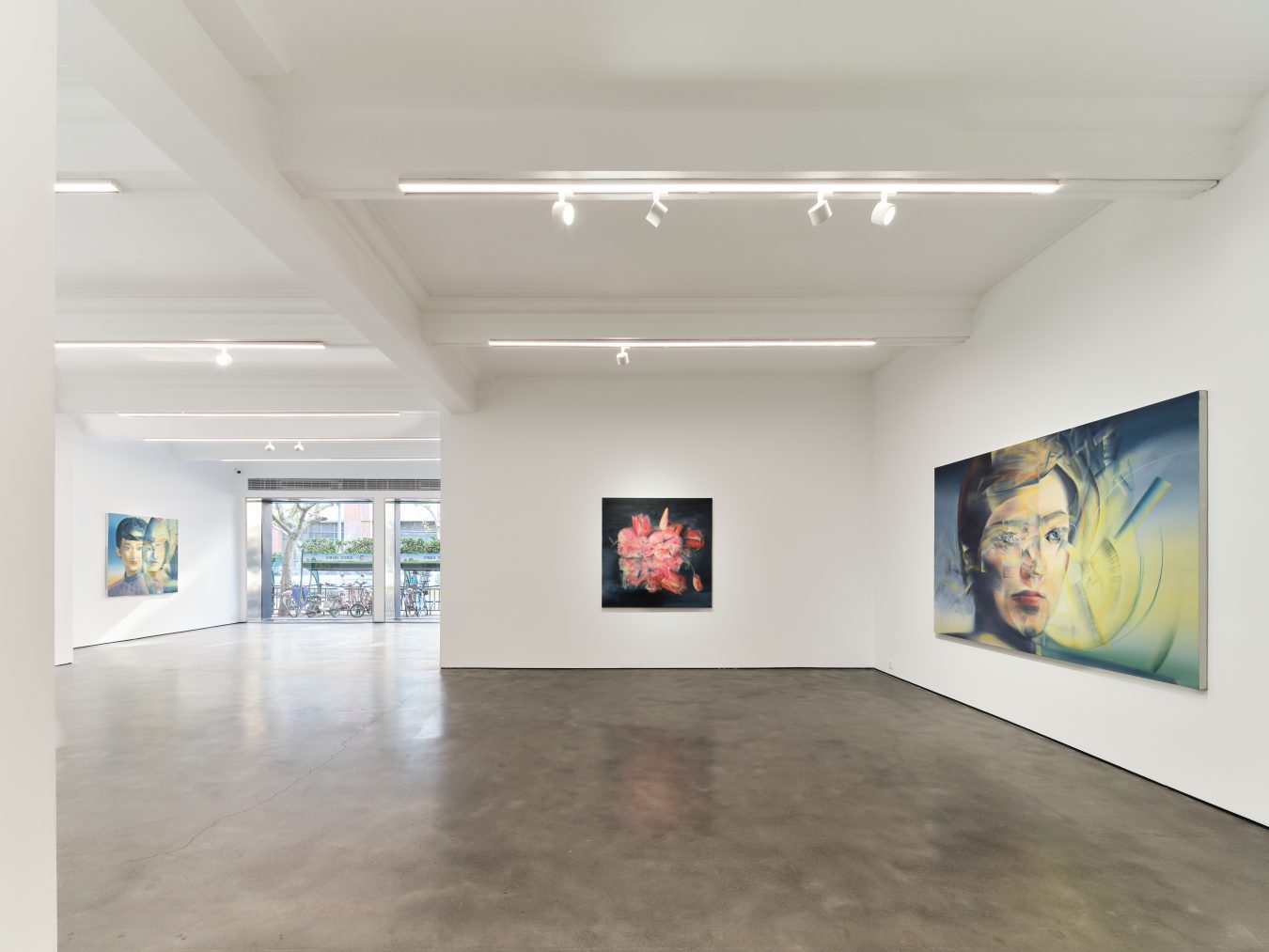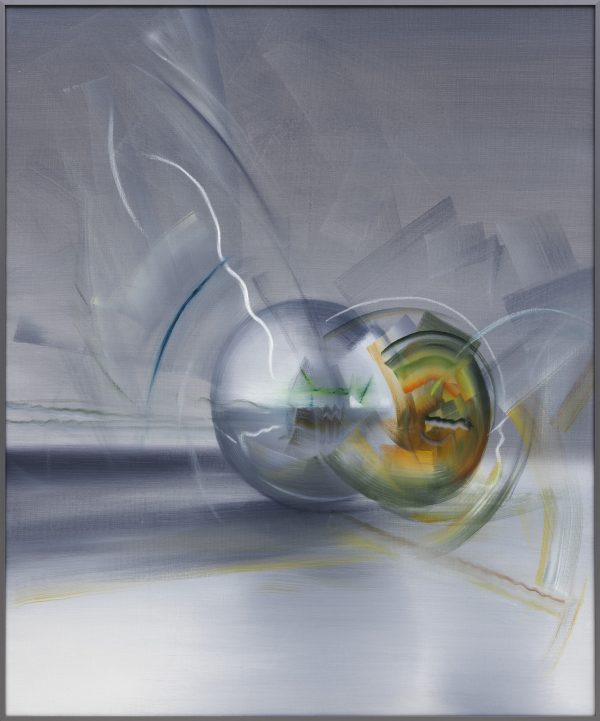Hive Center for Contemporary Art is pleased to present post-90s artist Zigsen Liu’s latest solo exhibition, “Unnamed Vision,” opening on December 20th, 2024, at Hive Becoming Shanghai. “Unnamed Vision” presents Liu’s most recent body of works, and is on through January 22, 2025. Curated by Sarah Qing Markovitz.
In today’s digital age, everyone is affected by the rapid development of technology. Computer use has permeated into nearly every aspect of daily life, from socializing, to working, to banking, to shopping, health, and even transportation, to name a few. For Liu, born in 1992, the first few years of his life were marked by the television era, and less than ten years later he first used a computer in middle school. He recalls that technology developed so fast, like “flipping through a book and skipping pages, and even chapters.” By the time he reached university, he was convinced of a deeper meaning behind society’s constant adaptations to AI and computer simulations and began using his art as a means to explore the effects of technology on human emotions.
Of course, Liu is not the only one considering the philosophical impacts that technology has on the human psyche. Roughly at about the same time that Liu was being introduced to technology as a young child, on the other side of the Eurasian continent, British Anthropologist Alfred Gell was already proposing the idea that modern society is enchanted by the digital age. That is, we have been cast under a magical spell, our perceptions and consciousness are no longer their authentic form. Liu explores this concept of enchantment through his paintings, conveying a visual analogy for the confusion of living a bewitched life. By focusing the preponderance of his subjects on portraits and figures, Liu looks for ways to incorporate humanity into his paintings, rather than focusing on the technological half of the techno-social relationship. His use of gradient brushstrokes create blurriness and a greater sense of space while the ambiguous glowing horizons used as background landscapes work together to create a feeling of uneasiness and unknown. These components come together in the painting After Tomorrow, in which Liu partially conceals the subject’s face behind hypnagogic brushstrokes. The contrast of the bright to dark colors and the canvas’ smooth surface further give the sense of being trapped inside a computer-scape or a surrealistic AI simulation. Liu blurs only half of the subject’s face. Perhaps this character is trapped between two realms, looking for a way out. Comparably, The Last Painter shows figures and objects that float in a dark, unspecified, and uncanny setting, conspicuously living in overwhelming ambiguous gloom. Liu creates a world within a world, overlapping several layers of realms together in limbo and smudging where tangibility ends and enchantment begins, intentionally invoking the mystifying relationship between in and out, real and fake, crazy and rational.
Though the line between reality and digitization has become muddied, Liu is not demanding a call to action to clarify the difference between these two worlds. Liu isn’t looking for answers, but looks instead for questions: under the spell of enchantment, has modern society adjusted to allow a new normal in which we no longer question how deeply technology has permeated into our psyche? We have conditioned ourselves to survive in a mechanical landscape. It even feels as if it’s impossible to live without computers, but it is actually as simple as a choice. These choices are what creates two separate worlds. We have found ourselves in庄周梦蝶, unlocking the two coexisting spheres of reality which we subconsciously stand between. Perhaps the blurs that define Liu’s work gently nudge us to remember and hold close the essence of humanity as we drift further away from it.
Liu’s paintings, with their luminous haze and smudged facial characteristics, depict what it feels like to inhabit the world created by computers, living in something like reality but knowing it’s not the same thing. Liu characterizes the ominous visuals of living too much in the computer world-living inside Instagram, Tiktok, Wechat-in a different realm than the real, tangible world. The real world possesses our emotions, the essence of humanity. Comfort from a needed hug, rejuvenation from a fresh cup of tea, fulfillment from a job well done. Things that a computer will never be able to replicate. Liu brings us back in search for humanity, reminding us of what we have lost and encouraging us not to lose more in the future. Liu’s simulation-like paintings remind us to find our true balance between these two coexisting realms, purposefully choosing the extent we’d like to exist between the two. It’s up to us to define our existence within this Vision.






















